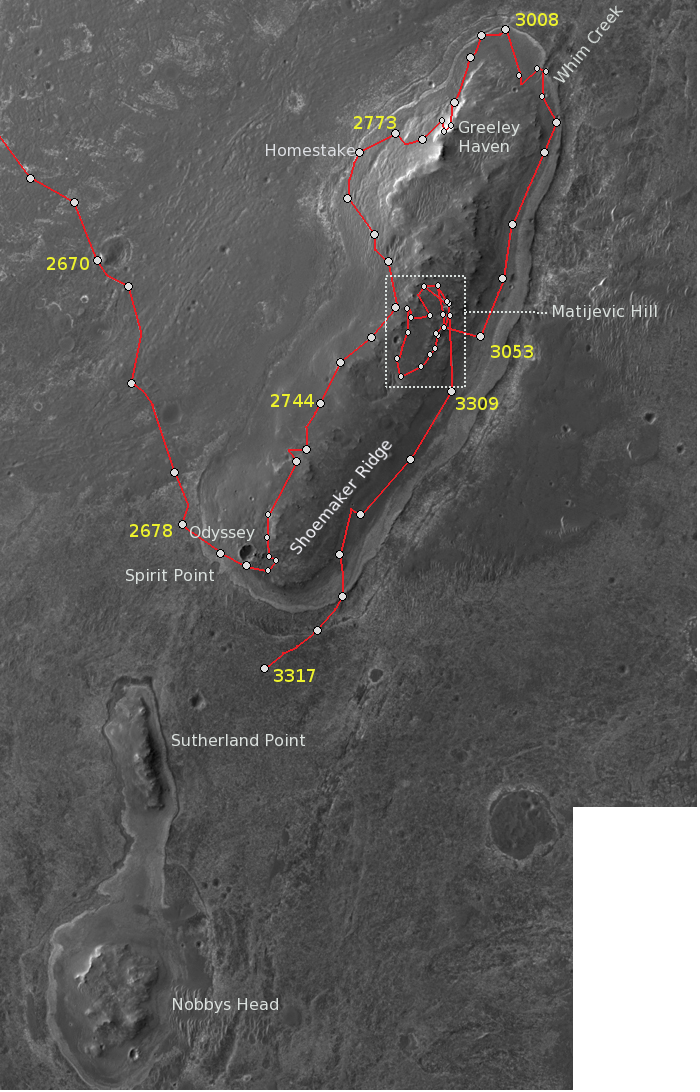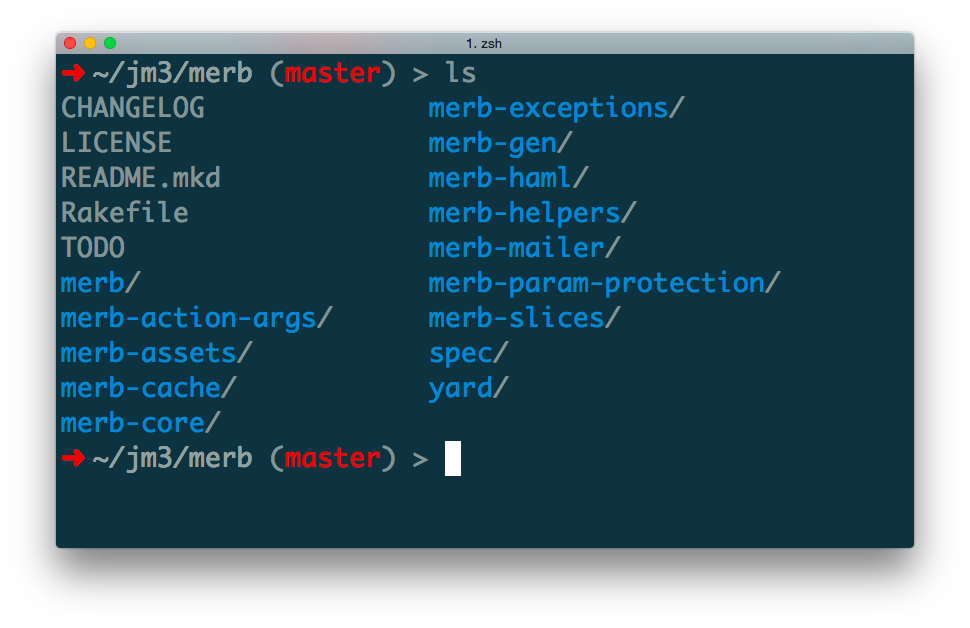|
Solander Point
Solander Point is at the north end of the west-southwestern ridgeline of Endeavour crater on the planet Mars. It is named after the Swedish scientist Daniel Solander, who was the first university-educated scientist to set foot on Australian soil at Botany Bay in 1770. Solander Point was visited in 2013 by the Mars Exploration Rover-B ''Opportunity'', a robotic rover that was active on Mars from 2004-2018. By early July 2013 ''Opportunity'' was approaching it from the North, after previously examining outcrops on the northwest edge of the crater, north of Solander. The rover drove south from ''Cape York'' through ''Botany Bay'' to travel to Solander. By July 2, 2013, it was about half-way there. The area was imaged from Martian orbit by HiRISE on July 8, 2013, data which aids the rover team in understanding the terrain and planning rover traverses. The rover has been making good time on its approach to Solander, giving the opportunity to investigate a curious area of terrain in ... [...More Info...] [...Related Items...] OR: [Wikipedia] [Google] [Baidu] |
Sulfate
The sulfate or sulphate ion is a polyatomic anion with the empirical formula . Salts, acid derivatives, and peroxides of sulfate are widely used in industry. Sulfates occur widely in everyday life. Sulfates are salts of sulfuric acid and many are prepared from that acid. Spelling "Sulfate" is the spelling recommended by IUPAC, but "sulphate" was traditionally used in British English. Structure The sulfate anion consists of a central sulfur atom surrounded by four equivalent oxygen atoms in a tetrahedral arrangement. The symmetry is the same as that of methane. The sulfur atom is in the +6 oxidation state while the four oxygen atoms are each in the −2 state. The sulfate ion carries an overall charge of −2 and it is the conjugate base of the bisulfate (or hydrogensulfate) ion, , which is in turn the conjugate base of , sulfuric acid. Organic sulfate esters, such as dimethyl sulfate, are covalent compounds and esters of sulfuric acid. The tetrahedral molecular geometry of th ... [...More Info...] [...Related Items...] OR: [Wikipedia] [Google] [Baidu] |
Opportunity Mission Timeline
''Opportunity'' is a robotic rover that was active on the planet Mars from 2004 to 2018. Launched on July 7, 2003, ''Opportunity'' landed on Mars' Meridiani Planum on January 25, 2004, at 05:05 Ground UTC (about 13:15 Mars local time), three weeks after its twin ''Spirit'' (MER-A), also part of NASA's Mars Exploration Rover Mission, touched down on the other side of the planet."Spirit" landed on January 4, 2004. While ''Spirit'' became immobile in 2009 and ceased communications in 2010, ''Opportunity'' exceeded its planned 90 sol (Martian days) duration of activity by 14 years 46 days (in Earth time). ''Opportunity'' continued to move, gather scientific observations, and report back to Earth until 2018. What follows is a summary of events during its continuing mission. ''Opportunity'' started in Eagle crater in 2004, literally landing inside on the crater basin, then it travelled outward making its way to Endurance crater. After this it went to Victoria crater, all the way m ... [...More Info...] [...Related Items...] OR: [Wikipedia] [Google] [Baidu] |
Endeavour Crater
Endeavour is an impact crater located in the Meridiani Planum extraterrestrial plain within the Margaritifer Sinus quadrangle (MC-19) region of the planet Mars. Endeavour is about in diameter. Using ''Mars Reconnaissance Orbiter'' data, phyllosilicate-bearing outcrops have been detected along its rim. These minerals may have formed under wet conditions in a low-acidic environment during the early history of Mars. There are raised rim segments to the north, east, and southwest. The rim has become worn, rounded and degraded, with infilling of plains material in a manner similar to the Victoria crater. When compared to the surrounding plains, the crater floor shows an enhanced spectral signature of basalt and hematite. The interior contains two groups of dune fields. Images taken since 2008 show evidence of changes in some of the associated formations, which may be evidence of active erosion by the martian wind over a period of two to three years. The plains surrounding the rim ... [...More Info...] [...Related Items...] OR: [Wikipedia] [Google] [Baidu] |
Cape York (Mars)
Cape York is a location on Mars, on the western rim of Endeavour crater. The ''Opportunity'' rover spent about two years exploring this portion of the rim in the early 2010s before moving south. The CRISM instrument on the ''Mars Reconnaissance Orbiter'' identified clay smectites in an area of Cape York, and the rover was sent to explore this location. MER-B ''Opportunity'' spend its fifth Martian Winter at Greeley Haven at Cape York, and also took a panorama at that location. MER-B spent 19 weeks stationed at Greeley Haven surviving the winter and went on the move again in May 2012, to further explore Cape York. MER-B arrived at Cape York in 2011 at Odyssey crater, which is on the southern end of the feature. ''Opportunity'' arrived at Endeavour crater on sol (August 9, 2011), at a landmark called ''Spirit Point'' named after its rover twin, after traversing from Victoria crater, over a three-year period. Spirit point was the name selected for where MER-B arrived at Endeavour ... [...More Info...] [...Related Items...] OR: [Wikipedia] [Google] [Baidu] |
MERB Sol3555 1
Merb is a discontinued model–view–controller web framework in Ruby, notable as a precursor to Rails 3. It brought increased focus on speed and modularity to Rails 3. The name Merb is a contraction of "Mongrel" and "Erb". Precursor to and merge with Rails 3 Merb began as a "clean-room" implementation of the Rails controller stack but grew to incorporate several ideas that deviated from Rails's spirit and methodology at the time, most notably component modularity, extensible API design, and vertical scalability. It was developed by Ezra Zygmuntowicz and Yehuda Katz. Most of these capabilities were added to Rails during the Rails 3/Merb merger. Merb was first released at the 2008 RubyConf and development has since stopped; Rails 3 ,therefore, serves as both the successor to Rails 2 and the successor to Merb. Differences from Ruby on Rails Merb's design attempted to address several criticisms of Rails 2: * lack of component modularity (monolithic design) * lack of an e ... [...More Info...] [...Related Items...] OR: [Wikipedia] [Google] [Baidu] |
MERB Sol3348 1
Merb is a discontinued model–view–controller web framework in Ruby, notable as a precursor to Rails 3. It brought increased focus on speed and modularity to Rails 3. The name Merb is a contraction of "Mongrel" and "Erb". Precursor to and merge with Rails 3 Merb began as a "clean-room" implementation of the Rails controller stack but grew to incorporate several ideas that deviated from Rails's spirit and methodology at the time, most notably component modularity, extensible API design, and vertical scalability. It was developed by Ezra Zygmuntowicz and Yehuda Katz. Most of these capabilities were added to Rails during the Rails 3/Merb merger. Merb was first released at the 2008 RubyConf and development has since stopped; Rails 3 ,therefore, serves as both the successor to Rails 2 and the successor to Merb. Differences from Ruby on Rails Merb's design attempted to address several criticisms of Rails 2: * lack of component modularity (monolithic design) * lack of an e ... [...More Info...] [...Related Items...] OR: [Wikipedia] [Google] [Baidu] |
MERB Sol3492 1
Merb is a discontinued model–view–controller web framework in Ruby, notable as a precursor to Rails 3. It brought increased focus on speed and modularity to Rails 3. The name Merb is a contraction of "Mongrel" and "Erb". Precursor to and merge with Rails 3 Merb began as a "clean-room" implementation of the Rails controller stack but grew to incorporate several ideas that deviated from Rails's spirit and methodology at the time, most notably component modularity, extensible API design, and vertical scalability. It was developed by Ezra Zygmuntowicz and Yehuda Katz. Most of these capabilities were added to Rails during the Rails 3/Merb merger. Merb was first released at the 2008 RubyConf and development has since stopped; Rails 3 ,therefore, serves as both the successor to Rails 2 and the successor to Merb. Differences from Ruby on Rails Merb's design attempted to address several criticisms of Rails 2: * lack of component modularity (monolithic design) * lack of an e ... [...More Info...] [...Related Items...] OR: [Wikipedia] [Google] [Baidu] |




